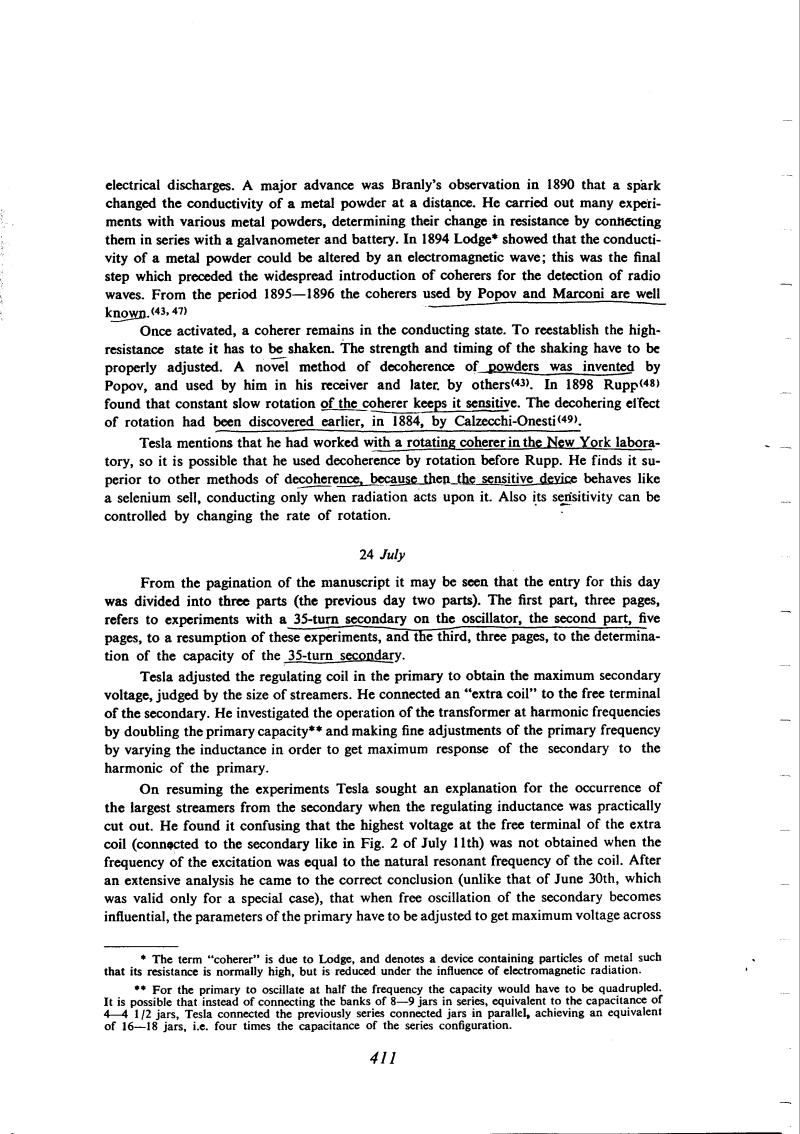
Nikola Tesla Books
* The term âcohererâ is due to Lodge, and denotes a device containing particles of metal such that its resistance is normally high, but is reduced under the influence of electromagnetic radiation.
** For the primary to oscillate at half the frequency the capacity would have to be quadrupled. It is possible that instead of connecting the banks of 8 - 9 jars in series, equivalent to the capacitance of 4 - 4 1/2 jars, Tesla connected the previously series connected jars in parallel, achieving an equivalent of 16 - 18 jars, i.e. four times the capacitance of the series configuration.
411
ÐЧÐÐ ÐÐ ÐСТÐÐ ÐÐ Ð ÐÐÐÐТÐÐ¥ÐÐÐÐ Ø Ð¸Ð·Ð´. ÐÐºÐ°Ð´ÐµÐ¼Ð¸Ñ ÐаÑк Ð¡Ð¡Ð¡Ð Ø MоÑÐºÐ²Ð°Ø 1960.
English: ESSAYS OF THE HISTORY OF RADIO ENGINEERING, ed. USSR Academy of Sciences, Moscow, 1960.
Fleming: p. 467.
Fleming: p. 483.
Calzecchi - Onesti T. âSulla conduttivita elettrica delle limature metallicheâ, Nuovo cimento, 1884, v. 16, p. 58, 1885, v. 17, p. 38 (Pisa).
English: Calzecchi Onesti T. "On the electrical conductivity of metallic filingsâ, Nuovo cimento, 1884, v. 16, p. 58, 1885, v. 17, p. 38 (Pisa).

